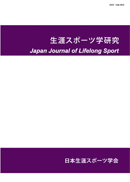Volume 9, Issue 1-2
Displaying 1-7 of 7 articles from this issue
- |<
- <
- 1
- >
- >|
Special contribution
-
2013Volume 9Issue 1-2 Pages 1-10
Published: March 31, 2013
Released on J-STAGE: September 20, 2013
Download PDF (571K)
Originals
-
2013Volume 9Issue 1-2 Pages 11-18
Published: March 31, 2013
Released on J-STAGE: September 20, 2013
Download PDF (1243K) -
2013Volume 9Issue 1-2 Pages 19-31
Published: March 31, 2013
Released on J-STAGE: September 20, 2013
Download PDF (1690K)
Material
-
2013Volume 9Issue 1-2 Pages 33-42
Published: March 31, 2013
Released on J-STAGE: September 20, 2013
Download PDF (1609K)
Brief reports
-
2013Volume 9Issue 1-2 Pages 43-47
Published: March 31, 2013
Released on J-STAGE: September 20, 2013
Download PDF (1259K) -
2013Volume 9Issue 1-2 Pages 49-55
Published: March 31, 2013
Released on J-STAGE: September 20, 2013
Download PDF (1674K)
The 14th annual meeting
-
2013Volume 9Issue 1-2 Pages 59-73
Published: March 31, 2013
Released on J-STAGE: September 20, 2013
Download PDF (1251K)
- |<
- <
- 1
- >
- >|
